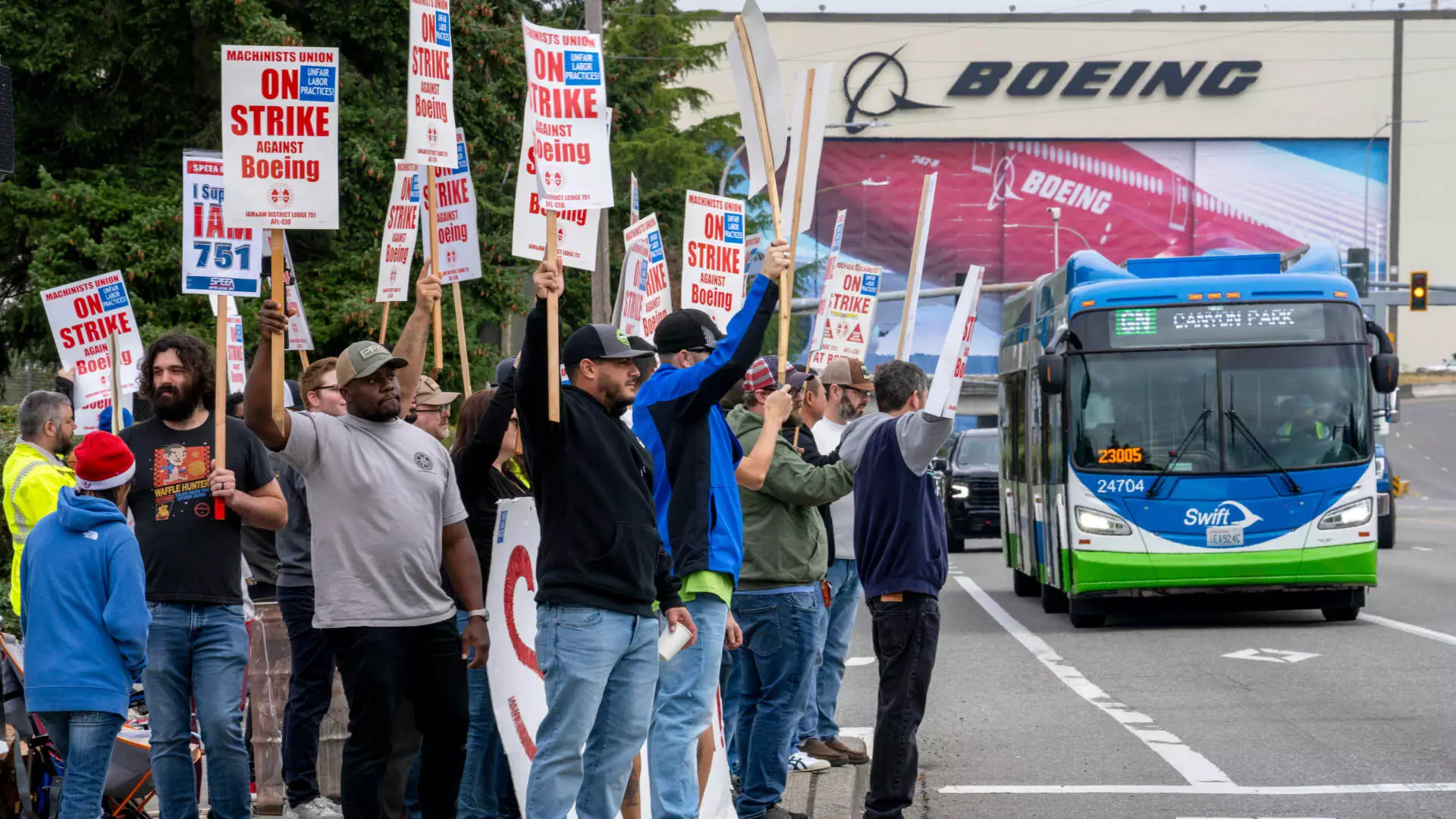Boeing has announced temporary furloughs for a significant portion of its workforce, signaling serious internal challenges as the company grapples with the ongoing machinists’ strike. This decision emerges amidst a contentious labor dispute that has pitted Boeing’s management against its machinist union, which represents over 30,000 workers in the Seattle area and Oregon. CEO Kelly Ortberg communicated this difficult decision to employees, emphasizing the company’s necessity to manage its cash flow prudently during this turbulent period. Such furloughs do not merely impact executives; they could potentially affect tens of thousands of employees, raising questions about job security and the company’s long-term viability.
The circumstances leading to this situation are far from straightforward. A week prior to the furlough announcement, union machinists overwhelmingly rejected a proposed labor contract, with an alarming 96% voting in favor of striking. They cited inadequate wage increases and the lack of pension restoration as significant factors in their decision. Negotiations have limped along despite a mediator’s involvement, highlighting broader tensions within the company that have troubled its workforce and leadership alike.
Company Strategy Under Stress
In an effort to address these challenges, Ortberg affirmed that he and his executive team would also take pay cuts in line with the furloughs, promoting a sense of shared sacrifice. However, the company’s resolve could be considered questionable, given the frequent reports of safety crises and quality concerns that have plagued Boeing in recent years. With a staggering $60 billion in debt, the stakes are higher than ever for leadership to turn the ship around.
Boeing’s Chief Financial Officer, Brian West, provided insight into the financial implications of the strike. By freezing hiring and raises while also temporarily letting go of ‘non-essential contractors,’ Boeing appears to be taking a more austere approach to its operations during this trying time. These measures, while necessary to counterbalance losses from the ongoing strike, could significantly hinder productivity and morale if they stretch on for too long.
The Broader Context and Future Prospects
The strike highlights not only labor-related issues but also larger systemic problems facing Boeing as it emerges from a tumultuous period characterized by operational setbacks. The fallout from an alarming incident involving a door plug blowout earlier this year raises concerns about safety protocols and engineering practices. With production of the 787 Dreamliners proceeding in a non-union facility in South Carolina, the ability to maintain quality standards while appeasing various stakeholders is paramount.
Boeing is currently at a crossroads, caught between its immediate need to preserve cash flows and the imperative to address labor grievances effectively. As the strike evolves and negotiations continue, the company must navigate these turbulent waters while prioritizing safety and quality—a challenging task, but one that is crucial for Boeing’s future trajectory. The effectiveness of its strategies will significantly influence not just the financial stability of the organization, but also its reputation in the aviation industry and among its skilled workforce.

